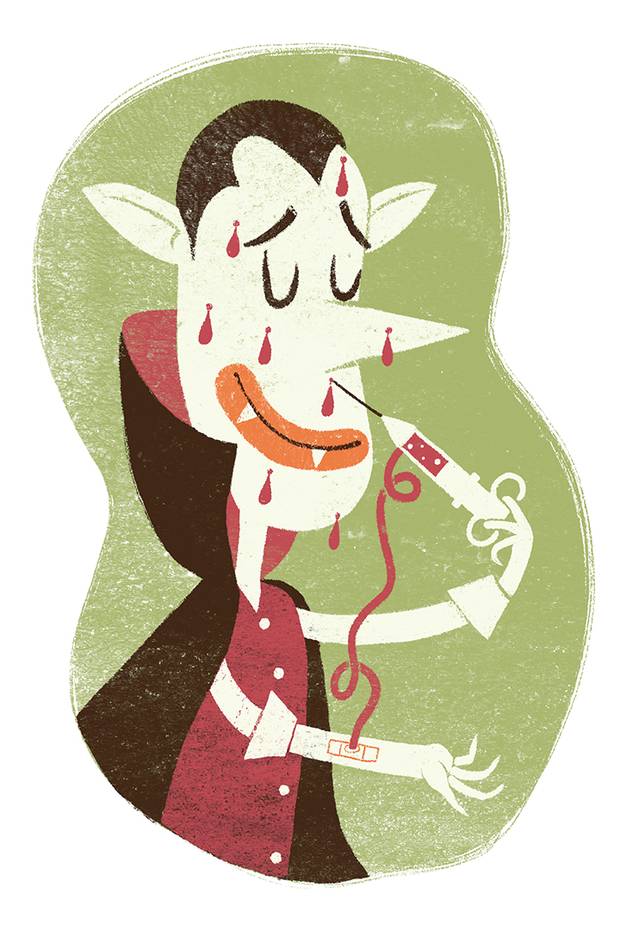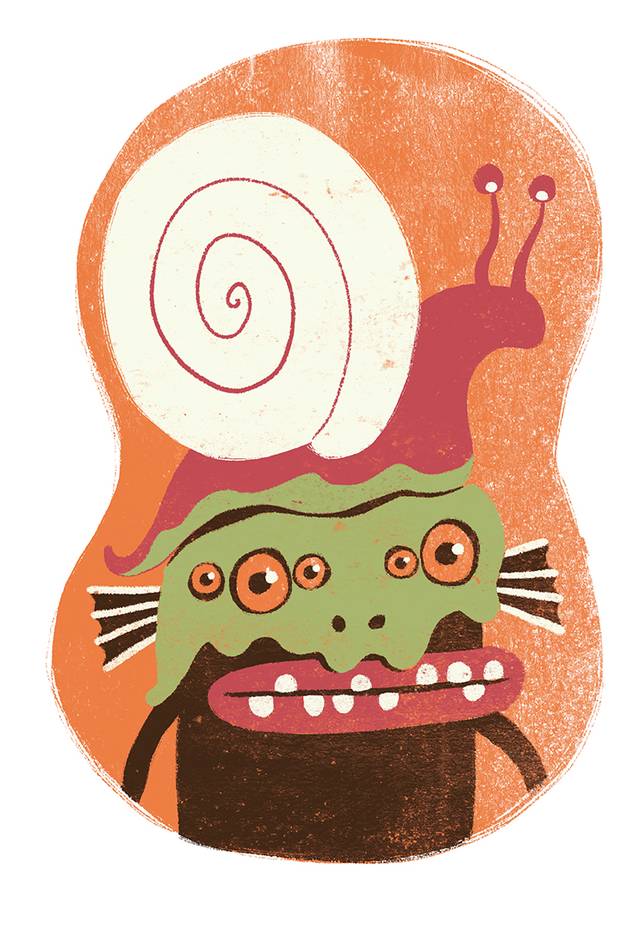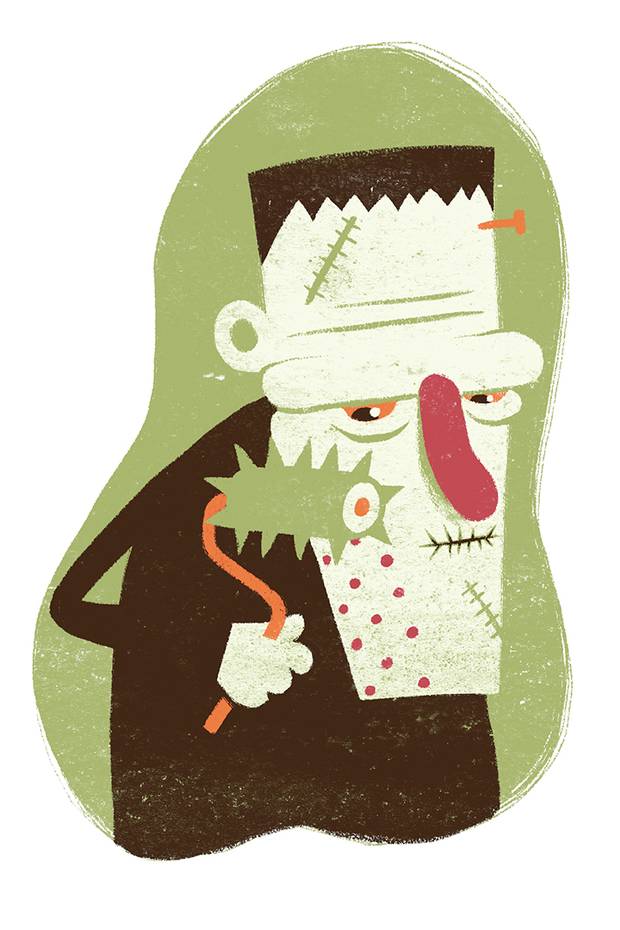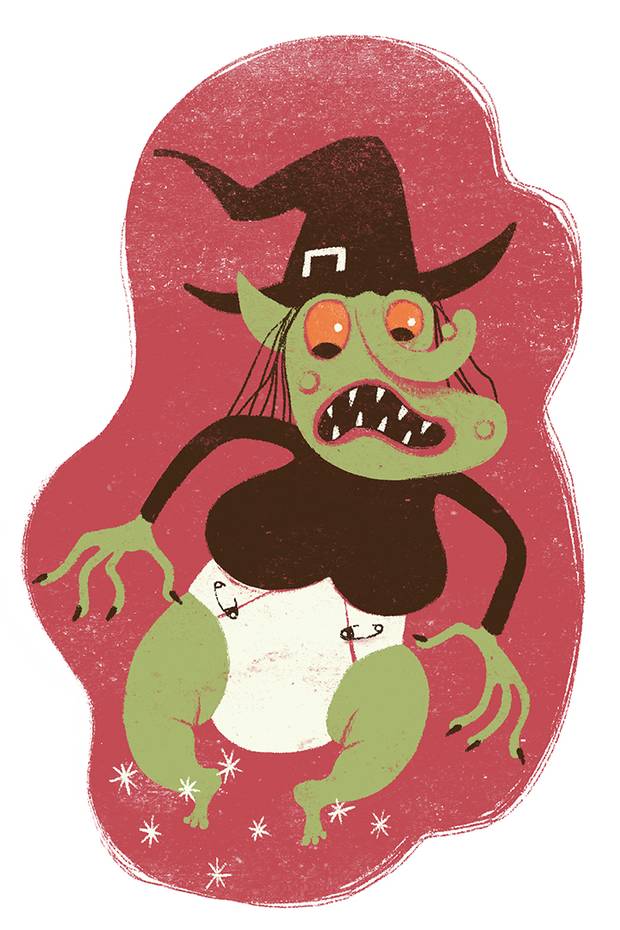It's said that Cleopatra, one of history's most enduring beauty icons, bathed in a luxurious combination of milk and honey. She also used a red pigment extracted from crushed-up beetles to add a rosy tint to her lips. Ancient Egyptians also spiked their kohl eyeliner with lead salt in an effort to ward off infections, a practice modern scientists believe may have had some anti-microbial benefits.
In Marie Antoinette's day, when massive wigs were all the rage, the over-the-top contraptions were bonded together using lard. As an adhesive it worked well – until rats detected its presence. Rodents would make their homes in the fancy, smelly wigs (hence the term "rat's nest" to describe a tangled coif). The aristocrats of the era took an equally ambitious approach to achieving an alabaster complexion, slathering their faces with a mixture of lead and vinegar; the result was ghastly indeed.
Today, weird – sometimes, revolting – beauty practices continue. Take Los Angeles-based dermatologist Dr. Sandra Lee (a.k.a. Dr. Pimple Popper), for example. She regularly uploads videos of gruesome extractions to her popular YouTube account. With many of her videos boasting upwards of 10 million views (her most-viewed clip stars a stubborn blackhead on the back of an 85-year-old woman), it's hard to deny that many of us are fascinated by the ugly truths behind beautification.
Even our most benign makeup applications – contouring, for instance – go through a clown-like phase before the final result gets blended into an Instagram-worthy glow. So, it's perhaps not surprising that some of the industry's hottest treatments today have a dark side. After all, what's beauty without a little pain?

BLOOD SIMPLE
Like many famous beauty offerings, such as Elizabeth Arden's Eight-Hour Cream, the "vampire facial" was originally created for healing purposes; in this case, for victims of serious burns and wounds. Technically called the Platelet Rich Plasma Treatment, it has skin-plumping benefits that were too good for cosmetic dermatologists to pass up. A favourite of Kim Kardashian, during this facial a small amount of blood is taken from the client and separated via centrifuge to detach the plasma from the red and white cells. The plasma is then injected back into the face to stimulate collagen production and improve skin's texture. Despite all the tabloid hype, dermatologist Dr. Shannon Humphrey, of Vancouver-based Carruthers & Humphrey, holds a more scientific opinion of the treatment, which is not offered at her clinic: "While the mechanism makes sense, there's really not a lot of evidence to show the benefits for patients," she says.
Where to get it: Clinique Révolution, 4519 Saint Denis St., Montreal (www.cliniquerevolution.com). The Beauty House, 110 Fort York Blvd., Toronto (www.thebeautyhouse.ca). ReNue, 301-401 9 Ave. SW, Calgary (www.renue.ca).

SLIME TIME
One of the many head-scratching beauty trends to come out of Korea involves the tapping of snail's slime by skin-care companies such as Tony Moly, Holika Holika and The Face Shop. They've laced sheet masks and moisturizing creams with the gooey stuff, which is collected without harming the snails, says Mélodie Pilon, marketing manager of The Face Shop Canada. "There is a special technique used where the mucus is collected by the trail the snail leaves," she says, adding that the benefits of this miracle mucin include hydration, smoothing and the promotion of skin repair, making it a natural fit for skin care. "Snails have excellent self-healing abilities. The mucin in the mucus heals their shells when they are damaged and it has the same ingredient that composes human skin."
Where to get it: The Face Shop Hwansaenggo Escargot Cream, $69 through www.thefaceshop.ca. Tony Moly Pure Eco Snail Moisture Gel, $16 at Urban Outfitters (www.urbanoutfitters.ca). Holika Holika Black Snail Repair Cream, $108 through www.holikaholika.ca.

HOT STUFF
Setting your hair on fire may seem counterintuitive to anyone with an iota of common sense, but it has recently been touted by some beauty thrill-seekers as a way to rid your strands of split ends. Known in Brazil, its country of origin, as velaterapia, this process became buzzy last year when model Alessandra Ambrosio posted a photo of a stylist taking a lit candle to a twist of her hair on Instagram. The idea is that the split ends are burnt off, so your locks get the freshening up of a haircut without losing length. At Caprice salon in Vancouver, master stylist Marina Boukin performs a Russian variation of the technique to treat, not shorten or shape, hair. Known as a fire cut, a cool blue flame works on the surface of the hair to lock in keratin and seal the ends, reportedly resulting in a healthier mane. "It's a nourishing treatment that addresses wisp-like, dry and even damaged hair," says Boukin, who reports visible results after just one procedure. Obviously, do not try this at home.
Where to get it: Strands Hair and Skin Treatment Centre, 203-131 Water St., Vancouver, (www.strandsvancouver.com). Caprice, 5000 Dufferin St., Toronto, (www.capricesalon.com).

SNAKE IT OFF
We've all been mesmerized by nature videos of snakes shedding their skins, but did you know that, with a little help, your calloused feet possess the same ability? The Baby Foot Deep Exfoliation Peel promises to do exactly what it says: return your feet to newborn-like smoothness. Developed in Japan, Baby Foot is a combination of exfoliating fruit acids and hydrating ingredients stored in plastic booties to be worn on your feet for one hour. Three to seven days later, the shedding begins, so best not to schedule any games of footsie during this time. "Although it looks fairly horrendous, the effect is only on the dead cells," says Dr. Diane Wong, a cosmetic physician and owner of Glow Medi Spa in Toronto, where she offers medical pedicures that veer on the unusual by exfoliating skin while dry. "The problem is that some people don't know how to limit themselves and overdo it – it's human nature." Be sure to follow the instructions and be patient as results may take awhile.
Where to get it: Baby Foot 1-Hour Treatment, $30, at select Hudson's Bay stores (www.thebay.com).

FINE POINTS
There's something especially hellraising about a micro-needling procedure (also known as dermarolling). This prickly process can be done in-office by a dermatologist or at home with a smaller, lint-roller-like device covered in short needles. The roller makes tiny pinpricks in the skin, essentially forming a canal to allow better product absorption. These tiny pricks are also like little injuries that send your skin into repair mode, boosting collagen production and firming it for a perkier complexion. While it may give you goose bumps, micro-needling does fall on the mild end of the treatment spectrum. "This procedure is ideal for anyone who wants to address or prevent the signs of aging without getting into invasive treatments," says Montreal-based cosmetic physician Dr. Yves Hébert, adding that the treatment requires little to no downtime.
Where to get it: Médecine Esthétique Dr Yves Hébert, 1832 Sherbrooke St. W., Montreal (www.dryveshebert.ca). Bellair Laser Clinic, 116 Cumberland St., Toronto (www.bellairlaserclinic.ca). Skinglow Laser and Rejuvenation Clinic, 1140 Homer St., Vancouver (www.skinglowlaser.ca).